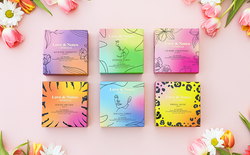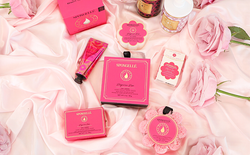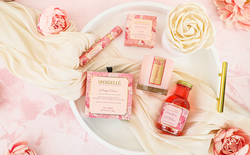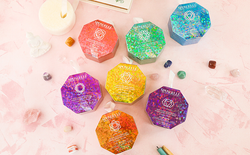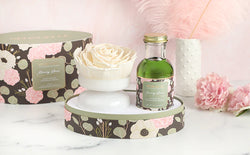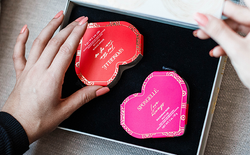The Hawaiian awapuhi plant has recently gone viral for being "nature's shampoo." You may have seen someone squeezing a plant that looks almost like a pine cone on TikTok or Instagram. Rich liquid pours out of the plant and is then used in the hair or skin.
The awapuhi plant is commonly found in Hawaii and Polynesia, where people have used its nectar for centuries. It smells like sweet ginger, which is why many people call it "shampoo ginger." There are many benefits to using this plant on your hair and skin. We will go over everything you need to know about Hawaiian awapuhi and how to use it.
What Is Hawaiian Awapuhi?
While the awapuhi plant is found in Hawaii, it's native to Polynesia. The Polynesians brought the plant to the Hawaiian islands from Southeast Asia for its medicinal properties.
They used the plant for several different ailments and pains. They used it to help with headaches, toothaches, stomachaches, skin diseases, and bruises and cuts. They believed it had anti-inflammatory properties. They used ashes from burnt leaves and combined in with small-leaf bamboo ashes and multiple plant saps as natural medicine.
More research is needed to determine if awapuhi is an effective treatment for these ailments. For now, the plant is used more in beauty products.
The awapuhi plant smells like ginger because it's closely related to the traditional ginger used in cooking. The ginger you use in the kitchen has many health benefits. The healing properties of the ginger plant are primarily found in the root. However, the beneficial part of the awapuhi plant is in the extract from the flowers.
To get this extract, you squeeze the flower until you see a clear substance flow out. You can store the substance in a glass jar. Hawaiians typically extract this mucus-like nectar and use it for shampoo, conditioner, and body wash.
Awapuhi Skin Benefits
Awapuhi offers many skin benefits thanks to its skin-repairing properties. Ginger and awapuhi have high levels of antioxidant properties, which may promote blood flow. Others believe it can help with collagen production, which makes your skin look plump and healthy.
However, there's not enough evidence yet to fully support these claims. Awapuhi does seem to have many moisturizing properties that can be very beneficial. Your skin needs hydration to protect your body and keep the outer barrier intact. Your skin barrier protects your body from toxins and ultraviolet radiation. It also helps hold moisture in your body and prevents water loss.
The skin barrier can become compromised when your skin gets dry or damaged. It can lose elasticity and look rough and flaky. Dry skin can lead to premature aging and accentuate fine lines and wrinkles. Awapuhi can help nourish and replenish your skin to protect your skin barrier.
You can slather the nectar right onto your skin. It doesn't feel too sticky, even though it looks like it might. You can also get awapuhi in many lotions and body butters.
There are other ingredients to look for that can help you replenish your dry skin, such as shea butter, jojoba oil, and vitamin E. Spongellé Body Lotions have all of these ingredients. Apply them to your body after showering with one of our nourishing Body Wash Infused Buffers, like the Coconut Verbena Pedi Buffer, for a finishing touch.
Hawaiian Awapuhi Benefits for Hair
Awapuhi can make hair soft and shiny and help repair dry or damaged hair by adding intense hydration. The anti-inflammatory and antioxidant properties help repair the hair. They may nourish the scalp and help with dandruff.
Awapuhi extract can also help balance the moisture in your hair, making it more manageable. When your hair is properly moisturized, it will stay healthy and protected. It is believed even to improve hair growth when you use awapuhi for a long time.
The plant may help with hair growth since it keeps your scalp healthy. A healthy scalp leads to healthy hair. If your scalp is red, itchy, or dry, it can be detrimental to your hair health. The follicles also make sebum, or oil, to keep your scalp hydrated.
You can develop skin conditions when there's a disruption in your scalp's microbiome. When you have severe dandruff or another skin issue, it can lead to hair breakage and dull-looking hair. These scalp conditions can also lead to premature hair loss. The awapuhi extract may help you avoid these scalp problems and keep your hair healthy.
There aren't enough studies done on this plant to say for certain that it will deliver on all of these benefits, but many people swear by it.
Hair Types and Hawaiian Awapuhi
Knowing your hair type can help you discover the best ways to care for and style it. The four main hair types are straight, wavy, curly, and kinky. There are also subcategories for each hair type since people can have varying curl patterns and thicknesses.
The type of hair you have is based on your genetics. You can alter your hair with heat or chemicals; however, this can lead to hair damage. When your hair goes through a growth cycle, your hair’s original characteristics return.
The same hair products may not work for every hair type. The wrong products can make your hair frizzy, oily, or ruin your curls. However, Hawaiian awapuhi can work well with all hair types. It can cleanse and brighten hair by removing the build-up that can make hair look dull.
Awapuhi won't dry out your hair like other shampoos. It also won't make your hair greasy, despite how it looks!
People with curly, coarse, dry, or thick hair can especially benefit from awapuhi because of its ability to repair and protect hair. These hair types need a gentle wash and a lot of hydration to keep the hair cuticles closed to avoid frizziness.
How To Use Hawaiian Awapuhi in Your Hair
If you're lucky enough to have an awapuhi plant where you live, you can use the nectar straight from the plant. You simply squeeze the top of the plant, and the nectar will ooze out.
You can leave the awapuhi in your hair for several minutes, like a deep conditioner. Once it's had time to sit, thoroughly wash it out. Your hair will be soft and shiny.
The first few times you wash your hair with awapuhi, you will notice your hair change as it releases chemicals and build-up. Years of using harsh shampoos will cause detergent build-up and polymers. You may have to wash it a few times before your hair returns to its natural state.
Most people don't have easy access to the awapuhi plant. The easiest way to get awapuhi is to find hair care products with awapuhi extract in the ingredient list. It is used in shampoos, conditioners, and leave-in conditioners.
Planting Hawaiian Awapuhi
If you live in a warm enough climate, you can try planting your own awapuhi plant. It requires a temperature between 71-77 degrees Fahrenheit. The plant can handle short-term freezes but needs to be protected during longer cold spells.
The plant needs to be in an area that gets full sun to partial shade for at least six hours a day. It also needs one inch of water per week. Make sure the soil around the plant is damp but not too wet. You can water the ground around your awapuhi every few days or when the top soil starts to dry out.
You should try to plant it in well-draining soil. Look for rich potting soil in a container that allows water to drain out of the bottom. You can add more soil around the plant annually. The plant takes ten months to grow, so be patient.
Once the flower turns from green to red, you can harvest the shampoo. Squeeze it into a jar and freeze it to preserve it until you need to use it!
Try Hawaiian Awapuhi
The Hawaiian awapuhi plant has many benefits for your hair and skin. It can hydrate your hair and cleanse it of impurities. Awapuhi can also help to protect and restore your skin's natural barrier.
There are many places you can get beauty products with awapuhi. You can also plant your own awapuhi plant and harvest the natural shampoo yourself!
來源:
Health Benefits of Ginger | Web MD
Healthy Scalp: Definition, Benefits of Healthy Scalp, How To Treat It | Healthline
Awapuhi kuahiwi | Bishop Museum
Types of Hair: How To Style and Care for Your Hair Type | Healthline
